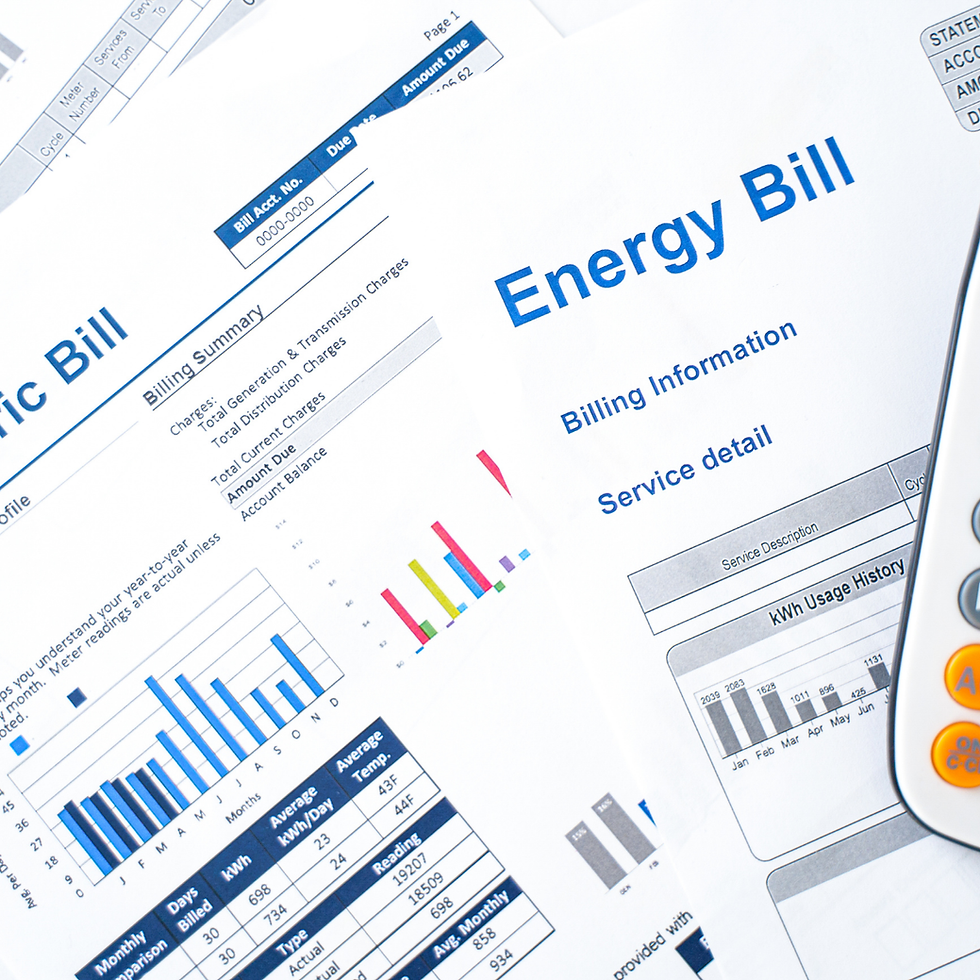Don’t Let Back-Billing Derail Your Sustainability Journey
- louise54429
- Oct 7
- 2 min read

It’s great to receive a rebate on your utility bills, but what happens when you discover that you’ve underpaid and now owe hundreds of thousands in back billing?
We’ve seen it with many new clients; it’s easy to become complacent with utilities, opting to rely on estimated usage to guide billing rather than using manual meter readings, especially when dealing with a large site. However, these unforeseen bills will harm your budget and hinder your sustainability journey.
What is back-billing?
For those unfamiliar, back-billing occurs when a supplier retrospectively bills a customer for energy that was either unbilled or underbilled. The causes for back-billing can be linked to factors such as:
Transitioning between suppliers
Bills not being sent due to IT glitches
Regulatory or market-driven price changes
Not being charged at the correct rates
Uncalibrated meters
Lack of meter reads
When faced with back billing, your first point of call should be to your supplier; it’s their responsibility to ensure that billing is done accurately and issued on time.
For a business, under the Limitations Act of 1980, your supplier cannot claim monies owed for any back billing that exceeds 6 years. Microbusinesses, which employ less than 10 people, have an annual turnover of less than £2 million and consume less than 100,000 kWh of electricity or 293,000 kWh of gas annually, may be subject to the same restriction as domestic customers, who can only be charged up to 12 months retrospectively. To reduce instances of back-billing, your organisation can do the following:
Record monthly meter readings and send them to your supplier, and keep photos as evidence.
Monitor energy use for comparison against previous months and years.
Check for faults, a faulty meter or corrector will give incorrect values and affect your billing.
Prevention
Ultimately, your energy bills should be tailored to your usage, so it’s clear to see where, and how much, of your energy is being used. Without this knowledge, the steps needed to reduce energy on site can’t be evidenced.
In a building with shared tenancy, ensure you have access to submeters for clear demarcation of the energy used by your organisation. This is essential for recording your sustainability journey, as it will give your organisation transparency and accountability. If you are an organisation that has tenants, without submetering in place, you may be recording someone else’s usage as your own.
Work with your landlord to ensure that the heating system in your building is regularly monitored and maintained, so that issues related to wear and tear can be addressed promptly, preventing low efficiency and increased energy consumption.
Within your organisation, simple measures such as ensuring printers and monitors are turned off at the end of the day can get the ball rolling on becoming more energy efficient.
Whatever the root cause, the burden of back-billing is a heavy one for a business to carry. At LCE, we work with our clients to gain a deeper understanding of their utility bills, providing the necessary transparency to see how their energy is being used and where savings can be made to reduce their carbon footprint and further their journey towards sustainability. Schedule a consultation to see how we can assist your organisation https://www.lowco2.uk/schedule-a-consulation.




Comments